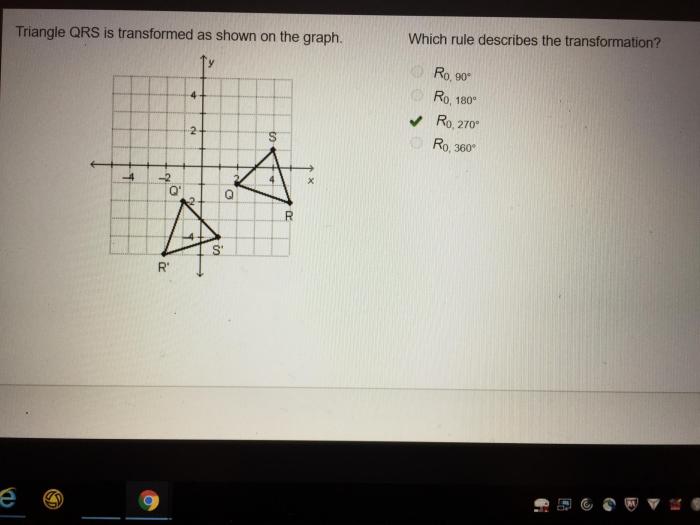Use the image to determine the type of transformation shown – Through the lens of image analysis, we embark on a journey to explore the diverse array of techniques employed to decipher the intricacies of digital images. From pixel manipulation to edge detection and color histogram analysis, each approach unveils unique strengths and limitations in unraveling the secrets hidden within visual data.
Delving deeper into the realm of image transformations, we encounter a spectrum of operations that reshape and manipulate images. Rotation, scaling, cropping, and flipping emerge as fundamental techniques, empowering us to alter the size, orientation, and composition of images with remarkable precision.
Image Transformation: Use The Image To Determine The Type Of Transformation Shown

Image transformation is a fundamental operation in image processing that involves manipulating an image to change its size, shape, or appearance. Image transformations are widely used in various applications, including medical imaging, computer vision, image editing, and computer graphics.
Image Analysis Techniques
Image analysis techniques are used to extract meaningful information from images. Common techniques include:
- Pixel manipulation: Manipulating individual pixels in an image to change its color, intensity, or other properties.
- Edge detection: Identifying edges and boundaries within an image to extract shapes and objects.
- Color histogram analysis: Analyzing the distribution of colors in an image to determine its color characteristics.
Transformation Types, Use the image to determine the type of transformation shown
Image transformations can be classified into different types based on their effect on the image:
- Rotation: Rotating an image by a specified angle.
- Scaling: Resizing an image by increasing or decreasing its dimensions.
- Cropping: Removing a portion of an image to focus on a specific region.
- Flipping: Mirroring an image horizontally or vertically.
Image Processing Tools
Numerous software tools and libraries are available for image processing, including:
- OpenCV: A comprehensive library for computer vision and image processing.
- ImageMagick: A command-line tool for image manipulation and conversion.
- GIMP: A free and open-source image editing software.
Practical Applications
Image transformations have numerous practical applications, such as:
- Medical imaging: Resizing, cropping, and enhancing medical images for diagnosis and analysis.
- Computer vision: Detecting objects, faces, and patterns in images for surveillance, security, and robotics.
- Image editing: Cropping, rotating, and adjusting images for aesthetic purposes or content creation.
Table of Image Transformations
| Transformation Type | Description | Example | Application |
|---|---|---|---|
| Rotation | Rotating an image by a specified angle | Rotating a photo 90 degrees to change its orientation | Image stabilization, perspective correction |
| Scaling | Resizing an image by increasing or decreasing its dimensions | Enlarging an image for printing or reducing it for web display | Image resizing, thumbnail generation |
| Cropping | Removing a portion of an image to focus on a specific region | Cropping a photo to remove unwanted background | Image composition, object extraction |
| Flipping | Mirroring an image horizontally or vertically | Flipping an image horizontally to create a mirrored effect | Image enhancement, symmetry detection |
FAQ Insights
What are the key image analysis techniques?
Pixel manipulation, edge detection, and color histogram analysis are fundamental techniques used to analyze images.
How can I identify different types of image transformations?
Examine the changes in size, orientation, and composition of the image to determine the type of transformation applied.
What are some practical applications of image transformation?
Image transformation finds applications in medical imaging, computer vision, and image editing, among other fields.

